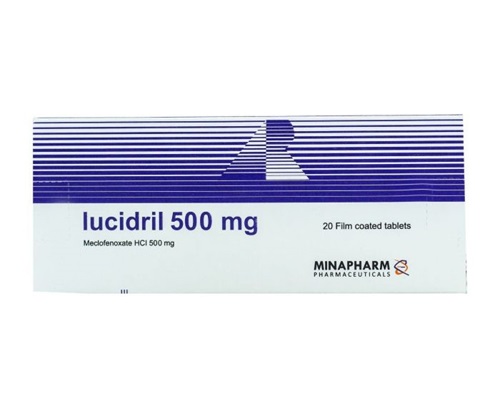Description
Tradename:
Cidamex
Compound:
Each tablet contains:
Acetazolamide 250 mg
Auxiliary components: povidone, colloidal silicon dioxide, corn starch, magnesium stearate, sodium glycolate.
Properties:
A diuretic with a weak diuretic effect. Inhibits the enzyme carbonic anhydrase in the proximal convoluted tubule of the nephron. Increases urinary excretion of sodium, potassium, bicarbonate ions, does not affect the excretion of chlorine ions; causes an increase in urine pH. With prolonged and/or frequent use, it may cause metabolic acidosis. Reduces intraocular pressure. Reduces the production of cerebrospinal fluid.
The drug is used as an adjuvant in the treatment of epilepsy, since inhibition of carbonic anhydrase in nerve cells of the brain inhibits pathological excitability.
Indications:
Glaucoma (primary and secondary);
Acute attack of glaucoma;
Edema syndrome, especially in combination with alkalosis, in chronic cardiac and cardiopulmonary failure (as part of complex therapy);
Epilepsy (minor epileptic seizures).
Directions for use and dosage:
Glaucoma: Adults are prescribed 250-1000 mg (1-4 tablets) per day, dividing the daily dose of more than 250 mg into several doses. Then the dose is gradually reduced.
Edema syndrome: For adults, the starting dose is usually 250-375 mg (1-1.5 tablets) 1 time per day in the morning. The course lasts 2-4 days, with breaks of several days.
The best results are achieved with therapy of 250-375 mg per day for 2 days, then a break of 1 day, followed by repeating therapy in this regimen.
Epilepsy:
Adults: 250 – 1000 mg per day, this dose is divided into 3-4 doses.
Children: 8-30 mg/kg per day, divided into 3-4 doses, but not more than 750 mg/day.
Contraindications:
Acute renal failure (risk of developing encephalopathy), uremia, severe liver dysfunction, hypokalemia, metabolic acidosis, hypocortisolism, diabetes mellitus, first trimester of pregnancy, refractory hypokalemia and hyponatremia, Addison’s disease, hypersensitivity to sulfonamides, as well as any other components of the drug.
With caution: edema of hepatic and renal origin, simultaneous use with acetylsalicylic acid (doses more than 300 mg/day), pulmonary embolism and emphysema (risk of developing acidosis), II and III trimesters of pregnancy, old age, water-electrolyte imbalance, disturbance liver function, in patients at risk of urinary tract obstruction.
Precautionary measures:
In case of hypersensitivity to the drug, life-threatening adverse reactions may occur, for example, Stevens-Johnson syndrome, Lyell’s syndrome, fulminant liver necrosis, agranulocytosis, aplastic anemia and bleeding diathesis. If these symptoms occur, you should immediately stop taking the drug.
Sidamex, used in doses higher than recommended, does not increase diuresis, may increase drowsiness and paresthesia, and sometimes also reduce diuresis.
If the drug is used for more than 5 days, there is a high risk of developing metabolic acidosis. It is recommended to monitor blood and platelet counts at the beginning of treatment and at regular intervals during treatment, as well as periodic monitoring of serum electrolytes.
Acetazolamide should be used with caution in patients with bronchial obstruction and emphysema (conditions accompanied by impaired alveolar ventilation) due to the possibility of increased acidosis.
Acetazolamide alkalinizes the urine. In patients with a history of urolithiasis, the balance between the benefits of treatment and the risk of stone formation should be assessed.
If transient hearing loss occurs, acetazolamide should be discontinued.
The combined use of acetazolamide with high doses of acetylsalicylic acid (more than 300 mg/day) is not recommended due to the high risk of severe side effects.
During the treatment of epilepsy with specific antiepileptic drugs, there is a slight increase in the risk of suicidal thinking and suicidal behavior. The mechanism of this phenomenon is unknown, but existing data do not exclude such a risk with the use of acetazolamide. Therefore, when using acetazolamide for the treatment of epilepsy, patients should be monitored for possible signs of suicidal behavior and ideation and, if necessary, seek immediate medical attention.
Sidamex should be used with caution in patients with diabetes mellitus due to the increased risk of hyperglycemia.
Impact on the ability to drive vehicles and machinery:
Sidamex, especially in high doses, can cause drowsiness and, less commonly, fatigue, dizziness, ataxia and disorientation. During treatment, patients should not drive vehicles or operate machinery that requires increased concentration and speed of psychomotor reactions.
Use during pregnancy and breastfeeding:
Sidamex is contraindicated in the first trimester of pregnancy, and should be used with caution in the second and third trimesters.









